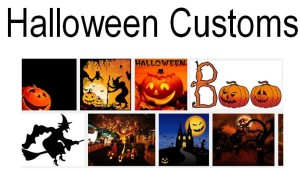Have you ever wondered about the history of our Halloween practices? – About the old Halloween customs that shaped the holiday that we’ve all come to know as “Halloween.” Well let me tell you some history on this exciting holiday and the ancient roots of Halloween. What do we truly know about the ancient traditions that sparked our modern Halloween celebrations? Are they spawned from tainted, sinister places in the past? Or could they have been created and intended for something else entirely? Do you know the history of our modern say Halloween celebrations? Well come read on to discover my research……
Ok here is where it all seemed to start….. Somewhere approximately 2,000 years ago in the North Eastern region of Europe, centralized around the areas of Ireland, the UK, and Northern France, a group of people known as the Celts held sacred religious rituals on the night of October 31st to celebrate the upcoming new year on November 1st. This celebration was know as Samhain, which is pronounced like “sow in”, and is a word that means “Summer’s End”.
The purpose of celebrating on October 31st was because the Celts believed that this night, the night before the beginning of the new year, was the one night the spirits of the dead came back to their earthly realm and could potentially cause havoc.
On this night, so it is told, they believed that their priests, also know as the Druids, would be able to communicate with these spirits to predict the outcome of the new year more accurately.
For the Celts, October 31st signified the end of summer, which was also the end of their harvest time, and the start of harsh winter months that many would not survive. This was precisely why the Celts looked to their priests to help them gain insight on what to expect in the coming winter months ahead. To them, it was a matter of life or death.
At the beginning of the Samhain celebration, a sacred bon fire would be lit by the Druids in which participants would then burn crops and animals considered sacrifices to their gods in attempts to appease them with a prosperous new year. The animals used in these ceremonies were selected carefully and believed they were unable to survive on their own throughout the harsh winter months ahead.
Throughout the festivities, Celts would wear lavish costumes constructed mainly of animal skins and heads.
After all the celebrations had ended, each participant would take a bit of the bon fire back to their homes and relight their fireplaces that were extinguished earlier in the evening prior to the ceremonies. They did this as a form of protection to keep themselves safe and their farms prosperous during the dark, cold winter months.
While these traditions were practiced for many years, they were about to change when the Romans conquered the Celts around 43 A.D. This would last for the next four hundred years.
The Romans combined the Celtic celebration of Samhain with two of their own that occurred around the same time. The first was called Feralia. This Roman traditional celebration was for remembrance of the dead. It lasted for one day towards the end of October. The second celebration was a day of honor for the Roman goddess Pomona.
An interesting fact about the goddess Pomona is that she was associated with fruit and trees. Her main identifying symbol was the apple, and could give some explanation in to why at some modern day Halloween gatherings people bob for apples.
With the changing and combining of the three traditions, it gained a new name that we are familiar with today. This new celebration, conducted on November 1st, was deemed All Saint’s Day. It was a day in which all people were granted permission to freely worship their deity of choice.
However, many people decided to also keep the older traditions and celebrate on October 31st in the ancient ways of their ancestors. This day was given the name All Hallows Eve. Now what we commonly refer to as Halloween, or Hallowe’en.
Some pretty interesting facts about Halloween customs and Halloween practices huh?



Leave a Reply